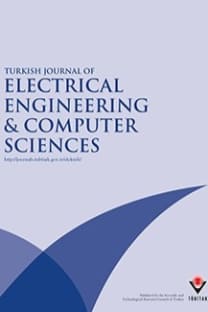Estimating facial angles using Radon transform
Radon transform, sinogram, facial angles, facial color image, profile view
Estimating facial angles using Radon transform
Radon transform, sinogram, facial angles, facial color image, profile view,
___
- Ozkul T, Ozkul MH. Computer simulation tool for rhinoplasty planning. Comput Biol Med 2004; 34: 697–718.
- Leong SCL, White PS. A comparison of aesthetic proportions between the healthy Caucasian nose and the aesthetic ideal. J Plast Reconstr Aes 2006; 59: 248–252.
- Annino DJ. Chin augmentation and genioplasty. Operative Techniques in Otolaryngology 1999; 10: 224–227.
- Zheng L, Shi D. Advanced Radon transform using generalized interpolated Fourier method for straight line detection. Comput Vis Image Und 2011; 115: 152–160.
- Magli E, Olmo G, Lo Presti L. Pattern recognition by means of the Radon transform and the continuous wavelet transform. Signal Process 1999; 73: 277–289.
- Jadhav DV, Holambe RS. Feature extraction using Radon and wavelet transforms with application to face recogni- tion. Neurocomputing 2009; 72: 1951–1959.
- Jadhav DV, Holambe RS. Radon and discrete cosine transforms based feature extraction and dimensionality reduction approach for face recognition. Signal Process 2008; 88: 2604–2609.
- Jadhav DV, Holambe RS. Rotation, illumination invariant polynomial kernel Fisher discriminant analysis using Radon and discrete cosine transforms based features for face recognition. Pattern Recogn Lett 2010; 31: 1002–1009.
- Lin CT, Fan KW, Yeh CM, Pu HC, Wu FY. High-accuracy skew estimation of document images. Int J Fuzzy Syst 2006; 8: 119–126.
- Kavallieratou E, Fakotakis N, Kokkinakis G. Skew angle estimation for printed and handwritten documents using the Wigner-Ville distribution. Image Vision Comput 2002; 20: 813–824.
- Liang ZP, Lauterbur PC. Principles of Magnetic Resonance Imaging: A Signal Processing Perspective. New York, NY, USA: Wiley-IEEE Press, 1999.
- Fariaby J, Hossini A, Saffari E. Photographic analysis of faces of 20-year-old students in Iran. Brit J Oral Max Surg 2006; 44: 393–396.
- Kass M, Witkin A, Terzopoulos D. Snakes: Active contour models. Int J Comput Vision 1987; 1: 321–331.
- Perlibakas V. Automatical detection of face features and exact face contour. Pattern Recogn Lett 2003; 24: 2977– 29
- Yow KC, Cipolla R. Enhancing human face detection using motion and active contours. In: 3rd Asian Conference on Computer Vision; 8–10 January 1998; Hong Kong, Vol. 1. London, UK: Springer-Verlag. pp. 515–522.
- Sathya PD, Kayalvizhi R. Modified bacterial foraging algorithm based multilevel thresholding for image segmenta- tion. Eng Appl Artif Intel 2011; 24: 595–615.
- ISSN: 1300-0632
- Yayın Aralığı: Yılda 6 Sayı
- Yayıncı: TÜBİTAK
ÇİĞDEM GÜNDOĞAN TÜRKER, FERİHA ERFAN KUYUMCU, NURHAN TÜRKER TOKAN
Cebrail ÇİFLİKLİ, Ahmet Turgut TUNCER, Yusuf ÖZTÜRK
SEYED MOHAMMAD HASSAN HOSSEINI, SEYED MOHSEN ENJAVI MADAR, MEHDI VAKILIAN
Moving as a whole: multirobot traveling problem constrained by connectivity
BEKİR MUMYAKMAZ, KERİM KARABACAK
Mehmet AKAR, Mahmut HEKİM, Umut ORHAN
Novel congestion control algorithms for a class of delayed networks
Shoorangiz Shams Shamsabad FARAHANI, Mohammad Reza Jahed MOTLAGH, Mohammad Ali NEKOUI
A new hysteresis band current control technique for a shunt active filter
